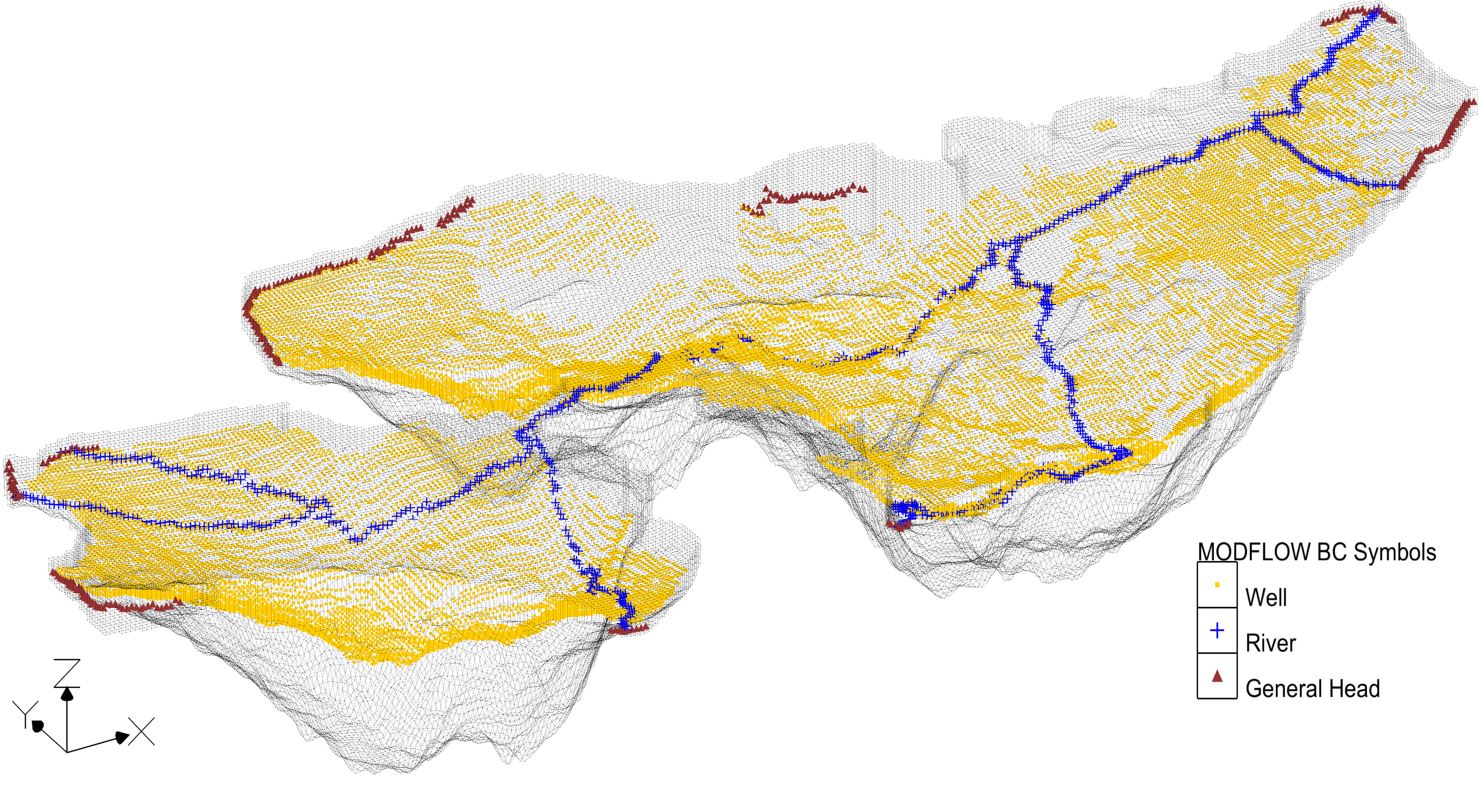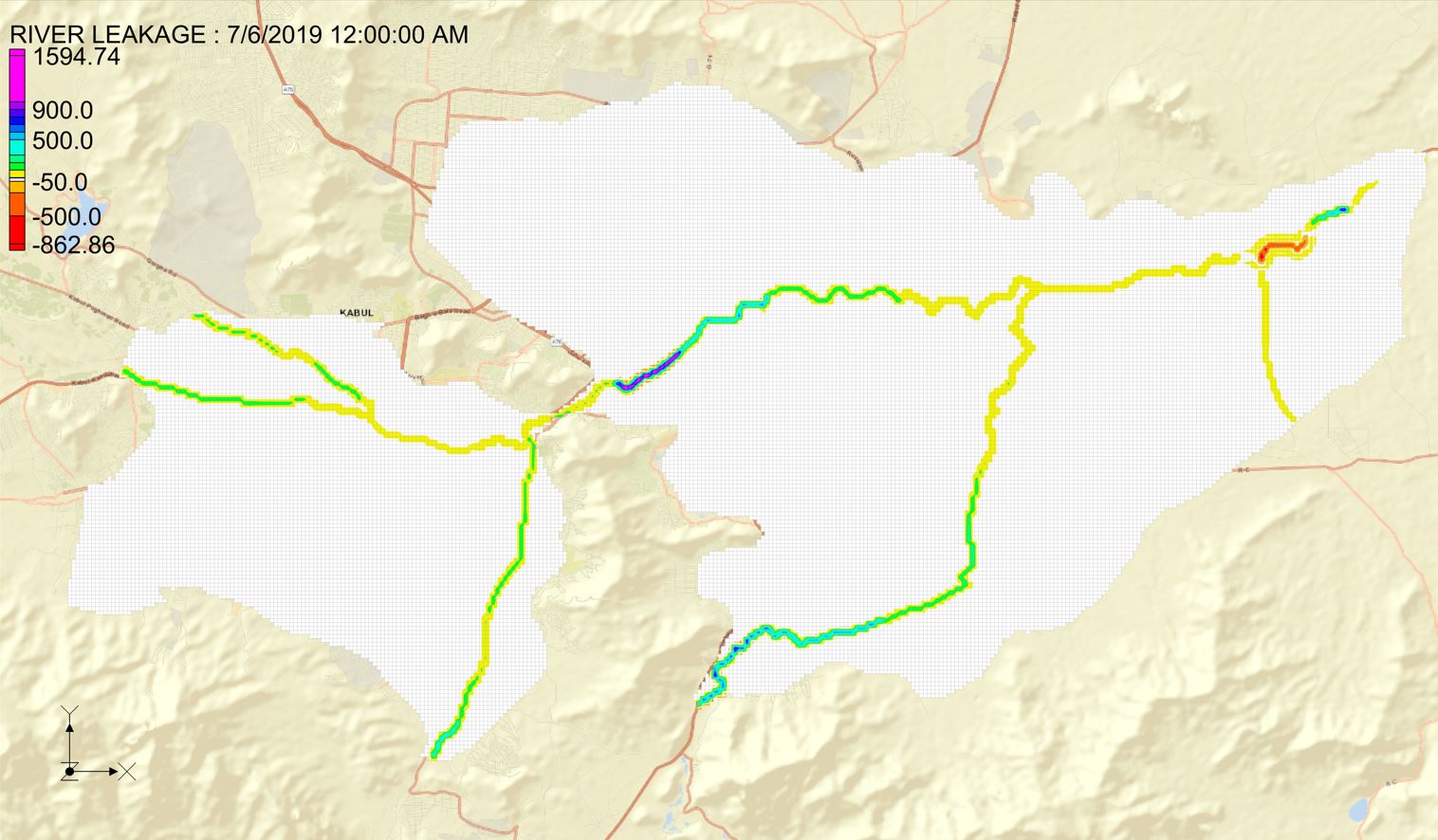HGRG Publications
By: Aref Nazari Assessment of groundwater resources in the kabul city area by groundwater flow modelling and water balance method.
Аннотация магистерской диссертации на тему: «Оценка ресурсов подземных вод в районе города Кабул» Краткое изложение основного содержания диссертации: Подземные воды являются единственным источником водоснабжения для питья, сельского хозяйства и промышленности в городе Кабул.Целью данного исследования является оценка ресурсов подземных вод с помощью методов водного баланса и моделирования потоков подземных вод. Элементы научной новизны магистерской диссертации: Впервые выполнена оценка ресурсов подземных вод Кабульской равнины с помощью методов водного баланса и моделирования потоков подземных вод код MODFLOW 2000. Научная и практическая значимость выполненной диссертации: методом водного баланса установлено, что на исследуемой территории имеется в среднем 138.08 млн. м3 в год потенциальных ресурсов подземных вод. Результаты численного моделирования потока подземных вод показывают, что ресурсы составляет 121.91 млн. м3 в год. Исследования включают оценку ресурсов подземных вод Кабулской равнины, моделирование сценариев управления, контроля и прогнозирования состояния ресурсов подземных вод. Объем и структура диссертации: Указанное исследование состоит из 115 страниц, которые по содержанию включены в четыре главы. Первая глава включает введение и общие сведения о исследовании, вторая глава - геологические и гидрогеологические условия исследуемой территории и Афганистана, третья глава - методология исследования, а четвертая глава – результаты, заключение и выводы. Ключевое слово: Оценка ресурсов подземных вод, Моделирование подземных вод, Метод водного баланса, Кабул.
Hydrogeology and hydro-geochemistry of carbonate/karst aquifers in Afghanistan have been poorly studied due to political instability and many other factors. Therefore, Dr. Abdulhalim Zaryab, General Director of HGRG with his colleagues have investigated the spatial distribution of carbonate aquifers in whole Afghanistan and characterize groundwater chemistry in carbonate aquifers of northern Afghanistan. This research is of particular importance being the first study (to best of the authors knowledge) to investigate carbonate aquifers in Afghanistan. Surely, the findings of this research may greatly contribute to sustainable groundwater resources management in Afghanistan.
The capital city of Afghanistan, Kabul, has experienced rapid urbanization since the end of 2001. The aim of this study is to evaluate the impact of rapid urbanization on the Kabul aquifer system, which is the main source of water for domestic, agricultural and industrial use in the area. Satellite imagery, groundwater levels and rainfall historical data were analyzed in conjunction with physico-chemical parameters that were measured at 27 water wells located in the Kabul Plain in 2020. Land-cover maps indicate that the urban surface area increased by 40% between 2000 and 2020, whilst the agricultural surface area simultaneously decreased by 32%. Meanwhile the Kabul Plain has globally experienced a severe decrease in groundwater levels (-0.8 m/year on average, and a fall of 60 m in some places) due to overabstraction, which has also seen changes in groundwater flow directions. Hydrochemistry, on the other hand, reveals that chloride concentrations and salinity increased throughout the aquifer between 2005 and 2020, while the nitrate concentration decreased in most places of the Kabul Plain over the considered period. The results suggest that rapid urbanization has had serious detrimental effects on both groundwater quantity and quality. Without urgent preventive policy and the implementation of effective practices, groundwater resource depletion and groundwater quality deterioration in the Kabul shallow aquifers are likely to continue in the future.
The Kabul urban aquifer (Afghanistan), which is the main source of drinking water for Kabul city's inhabitants, is highly vulnerable to anthropogenic pollution. In this study, the geochemistry of major ions (including reactive nitrogen species such as NO3−, NO2ˉ, and NH4+) and stable isotope ratios (δ15N-NO3−, δ18O-NO3−, δ18O-H2O,.
Understanding groundwater storage dynamic changes and quantifying the trends of groundwater fluctuations in the Helmand River Basin (HRB) aquifers, where the groundwater is the main source for drinking and irrigation applications, is significantly important in order to effectively manage groundwater resources. This case study quantifies the changes in groundwater storage over 18 years (i.e., from 2003 to 2021) .





